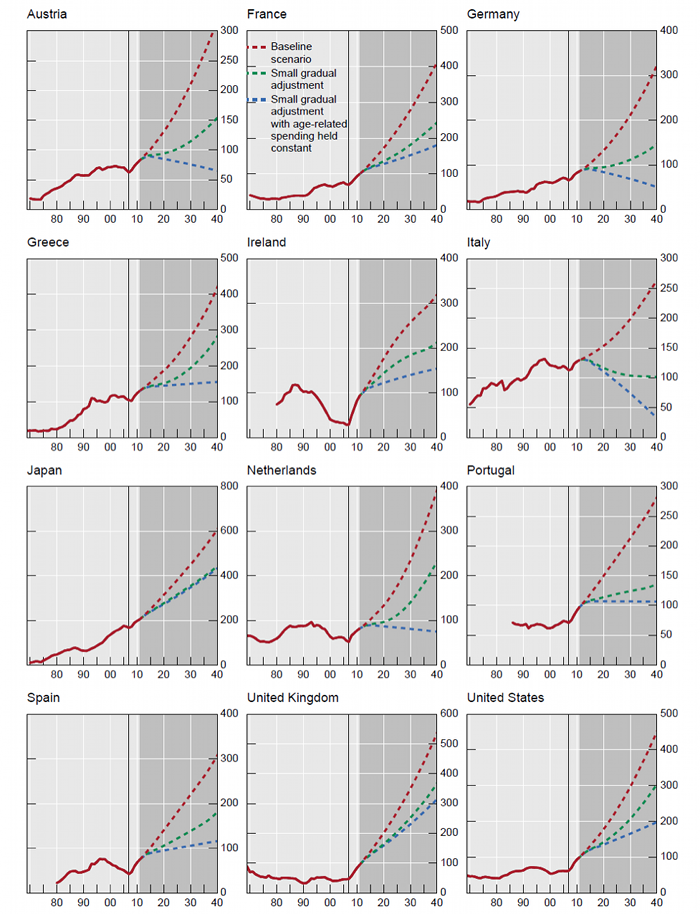In the ancient Greek play “Plutus” (Wealth) by Aristophanes, the unwise master named Chremylos pretends to be a righteous man who deserves wealth and prosperity at a time when his household suffers from poverty. In a classic pre-dialectic materialistic point of view he desires to remake the world in order for wealth to be acquired by the virtuous, believing that it is wealth (the material conditions) that determines our inner character, our philosophy, our identity, and our values. Thus, he takes matters into his own hands to restore Plutus’ sight (Plutus was blind, and hence the rain of blessings was falling on righteous and unrighteous alike).
Plutus’ sight is restored in the play, and suddenly things turned upside down. Wealth has intoxicated almost everyone to the point that nobody works and no one offers sacrifice to the gods. To solve the problem Hermes the god, decides to become a slave in order to show everyone that wealth is not produced by trading paper or by acquiring debt (I know, I know, the latter was not exactly what the play implied, thus please allow me this non-literal interpretation).
Debt needs to be repaid and/or settled for the right balances to be restored and the true potential of a person, entity, or a nation to be set on its trajectory. Some would say that that is exactly what the Christian world is celebrating these days, i.e. the settlement of sins through Christ’s sacrifice. In the Christian circles, once this debt is accepted as a gift for the repayment of sins, the liberating forces of resurrection unleash humanity’s potential and through that release the people are set free.
In the global arena these days the hangover from the debt’s intoxication is threatening even the AAA credit rating of the U.S. Hence, and as the following graph shows, it is not just the peripheral countries (Portugal, Ireland, Greece, Spain a.k.a. PIGS) that threaten the stability of the Euro zone, but it is the non-PIGS that threaten the globe with economic catastrophe and the endgame.
We wrote in a previous commentary (April 8) that the drama may involve three acts, namely: Credit overextension and banking crisis; sovereign-nation debt crisis; and the debasement of currencies. As the populations of nations grow older, the unfunded pension and healthcare liabilities will increase in an era where growth might be below potential.
The graph below shows that when simulations are run for a modified baseline scenario, the debt/GDP ratio is 300% for Germany, 600% for Japan, 500% for the UK, and over 400% for the U.S.
It seems that the postman is getting ready to ring the bell…As interest expenses rise from 5% to 27% over the next several years, fiscal consolidation might be getting even harder to accomplish, making debt levels unsustainable. New sources of growth that will create wealth need to be found, which in turn will create true assets that can be used in the credit creation mechanism. Otherwise, the endgame might be near and the postman may be forced to ring the bell quickly for the second time.

Source: OECD, Bank of International Settlements Working Paper (baseline scenario in red, small gradual adjustments in green, and in blue is the scenario with draconian cuts in age-related benefits)
In June 1933, a major conference took place in London. Representatives of 66 nations gathered together to contemplate the future of the international financial system. President Roosevelt essentially boycotted the conference, choosing first not to attend, and secondly to undermine an agreement that had almost been reached regarding exchange rates and currency regimes. FDR felt that the US could come out triumphant of the depression, and rein as the #1 superpower. The means to accomplish that was a mechanism of dollar depreciation (and hence the subsequent competitive devaluations).
In the years that followed, the US indeed emerged powerful. Other nations had to borrow from the US for reconstruction purposes, and the greenback became the reserve currency of the world. Trade imbalances were pretty much self-correcting due to the dollar standard. However, an inherent asymmetry was built into the system, and with the credit overextensions in mid to late 1960s, Plutus started “gaining” his eye-sight, with the ultimate result that the anchor of the system was abandoned on August 15, 1971.
Between 2002-’07 Plutus “recovered” his eye-sight completely, when the party of collateralizing and securitizing toxic assets was in full swing. Now, everyone could be wealthy at the push of a button (it might be time to remember the seven deadly social sins of Mohandas Gandhi, namely: Politics without principle; Wealth without work; Commerce without morality; Pleasure without conscience; Education without character; Science without humanity; and Worship without sacrifice).
Now, we are facing the music of the postman’s bell, and some think that they can repeat FDR’s policy by cheapening the currencies in order to get out of this predicament. History might repeat itself sometimes, but it may come as a tragedy rather than as an Aristophanes’ comedy. Back then, it was the backup of the gold anchor that allowed FDR to pursue his policy. Now, the anchor does not exist. We are all in it together and we better understand that “it is in giving when we receive”.
The prices of precious metals sing “Ode to resurrected anchors!”
